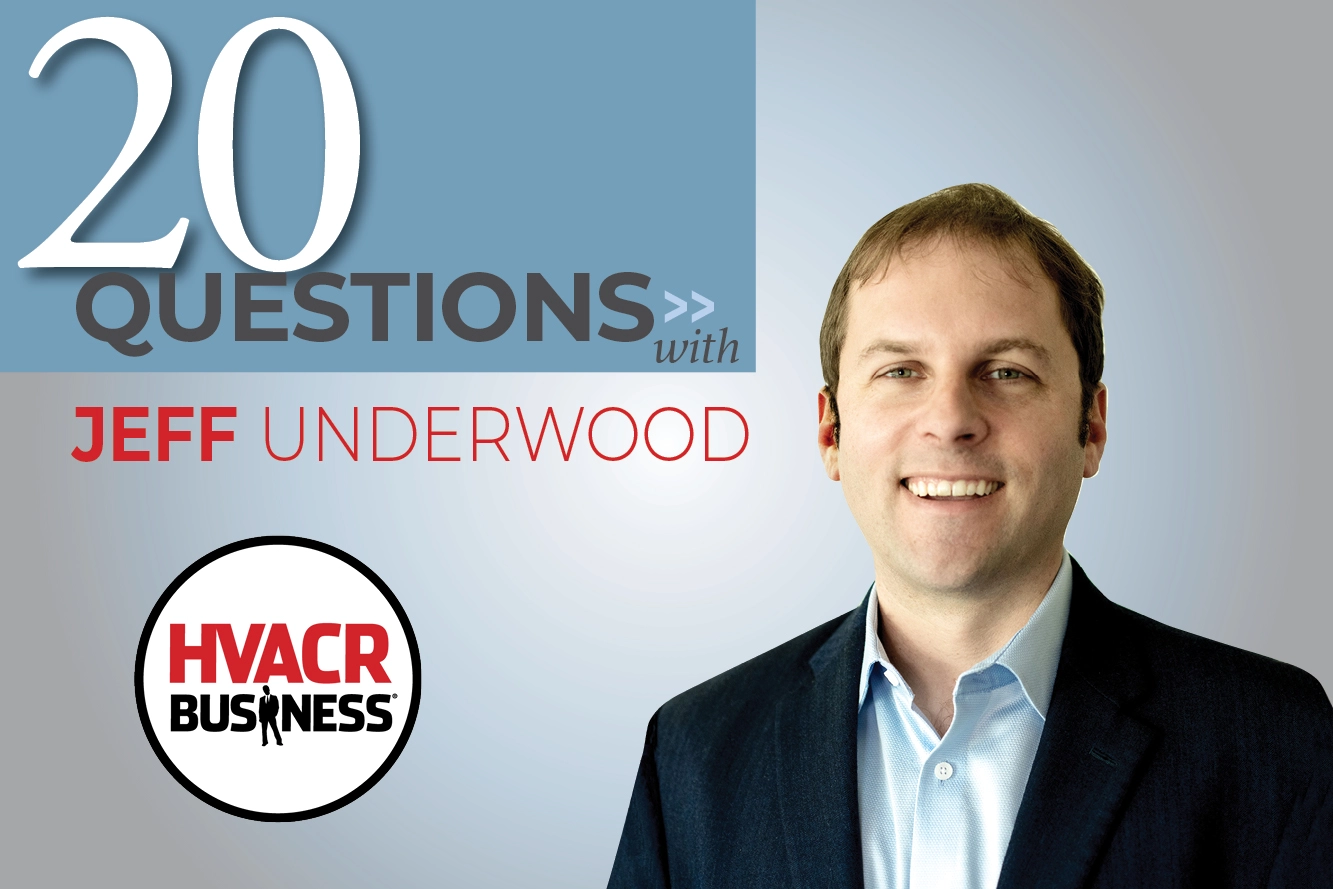Terry Tanker met with Brad Kivlan, president of Dynatemp International. The two discussed car racing, managing a company through the pandemic and the pending refrigeration transition.
1. Do you have a favorite hobby?
Occasionally, you may find me tossing a car around the Virginia International Raceway or other road courses in the Southeast.
2. What type of cars do you drive?
I’ll drive anything. I’ve been a fan of German cars for as long as I can remember, but my current track car is a stripped-down ’17 Ford Mustang GT350R. Ford built this track car to compete with the German heavyweights,and I can say that it is more than capable.
3. How did you get interested in racing?
I got a speeding ticket in Ohio for doing 101 mph in a 55. That experience made me realize that the only way I could safely and legally explore the limits of a car was to take it to a track. I started driving full road courses about five years ago but I still have a lot to learn.
4. What’s your hidden talent?
I make some pretty good bacon infused bourbon. Don’t knock it till you try it.
5. How did you get into the HVACR industry?
My family. My great grandfather, grandfather, father,uncle, and aunt all worked in the industry. At the start,I worked at my grandfather’s rep agency, the Hal Kivlan Sales Agency. Throughout school and college, I worked in the warehouse, accounting, customer service, and shipping & receiving. After graduating college in 1999, I joined the company as a salesman.
6. How was Dynatemp started?
My father started Dynatemp in the early ‘80s as a supplier of small equipment installation parts, supplies, and tools to complement the product lines that the rep agency was promoting.
7. When did Dynatemp become a stand-alone company?
Dynatemp became a stand-alone company in 1983. And,within a few years, Dynatemp grew into a 17,000 square foot warehouse in Carlisle, Pennsylvania.
8. In business what do you find most rewarding?
Creating something from nothing and having industry stakeholders adopt that creation.
9. What’s your motivation?
Reducing the environmental impact of comfort cooling and refrigeration used in U.S. households, businesses, and institutions.
10. How has the pandemic impacted Dynatemp’s ability to secure refrigerant?
The pandemic has created supply chain disruptions with our component suppliers and shipping partners. In most cases, we’ve had to increase lead times in our procurement and production schedule.
11. What has been the most significant challenge managing the company the last 18 months?
We changed the operating principles of Dynatemp International. We recognized the industry and our competitors were making bold moves, and we had to adapt quickly. We challenged our fundamental beliefs and company culture that had brought 30 years of success all so we could evolve and be poised to succeed over the next 30 years.
12. What steps did you take to change?
We built a better supply chain that lowered our component costs and increased supply continuity, even during the pandemic. Additionally, all of Dynatemp’s packaged refrigerant blends are manufactured in Clayton, North Carolina. And we built DynaCycle, a best-in-class reclamation program for our wholesale partners.
13. Do you feel the industry is ready for the refrigerant transition?
Fortunately, our industry has a lot of smart contractors and engineers with a history of quickly adapting to change. The biggest roadblock to our transition to next generation HFO/HFC blend refrigerants is the lack of U.S. residential building codes.
14. What do you think are the biggest risks?
I’m worried that there will be a shortage of HFC’s needed to charge new equipment and for aftermarket repair. Without broad national adoption of residential building codes and standards by 2024, we face another 30% reduction in HFC production and consumption without replacement refrigerants and equipment that adhere to U.S. residential building codes.
15. How are you helping your customers prepare for it?
�Through reclamation, we can ensure that there is enough supply of HFC refrigerants going into 2024 when consumption and production are reduced to 60% of the 2011-2013 baseline.
16. What are you forecasting for 2022?
We expect supply chain disruptions to impact the production and movement of refrigerants into the first half of 2022. One of the biggest challenges facing refrigerant suppliers is a shortage of U.S. manufactured disposable cylinders. �This year, Worthington Industries petitioned the Department of Commerce for antidumping duties on Chinese-made disposable steel refrigerant cylinders. Worthington prevailed, and antidumping duties have been established. Worthington is the only U.S. manufacturer of these cylinders, and demand has spiked well above production capacity. Even for existing customers prior to this decision, lead times from Worthington are currently one year.
17. What regulations are impacting you most?
Since 2015, DOC antidumping proceedings and EPA regulations have thrown normal supply, demand, and pricing curves out the window and created price volatility and supply chain disruptions for U.S. suppliers. Over the next two to three years, the EPA’s HFC phasedown will tighten the supply and availability of HFC refrigerants until HFO/HFC blends and natural refrigerant alternatives see widespread adoption.
18. How are you addressing that?
Reclamation. To reduce the overall GWP and ODP impact and boost the sustainability of HCFC-22 and HFC blends, we are o� ering quick cylinder exchanges and competitive buyback rates for most recovered refrigerants.
19. What do you want contractors to be aware of?
When the HCFC-22 phaseout started in 2010, HFC410A was EPA SNAP approved and readily available. Additionally, several HCFC-22 retro� t alternatives were available as substitutes if the demand for HCFC-22 ever became greater than the supply. � ere has been little to no adoption of HFC-410A retro� t alternatives, or residential HVAC equipment that contains refrigerant that replaces HFC-410A and conforms to U.S. building codes. Instead of a 14-year learning curve on how to safely handle new refrigerants and troubleshoot new system technology, contractors now have two.
20. What other options do contractors have?
Recovered refrigerants can be very valuable if contractors are careful not to mix them. Keep R-22, HFC-410A, and any other recovered refrigerants in their own recovery cylinders. Do not top off� HCFC-22 systems with an HFC alternative. It’s illegal, and the higher the purity of a single recovered refrigerant, the more you can get paid for it.






